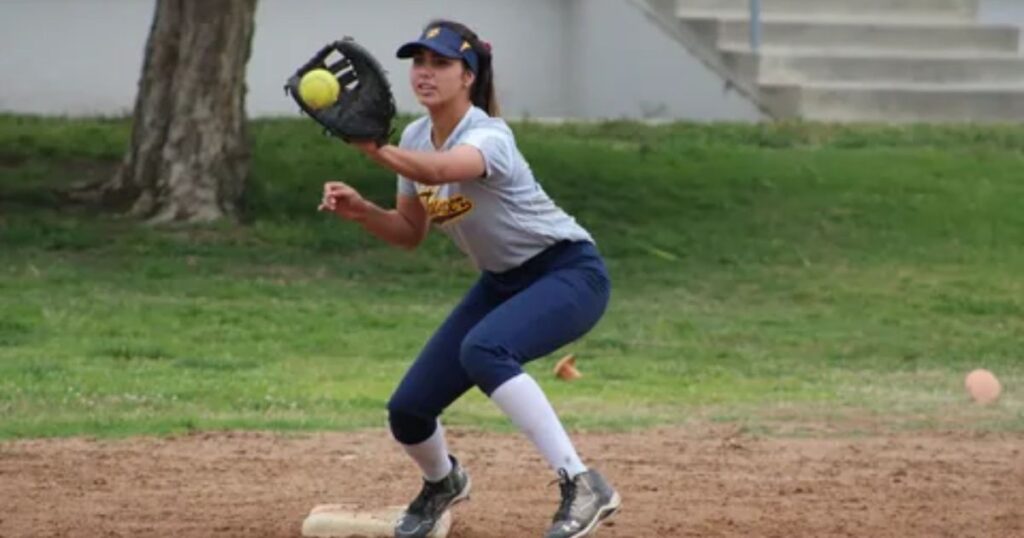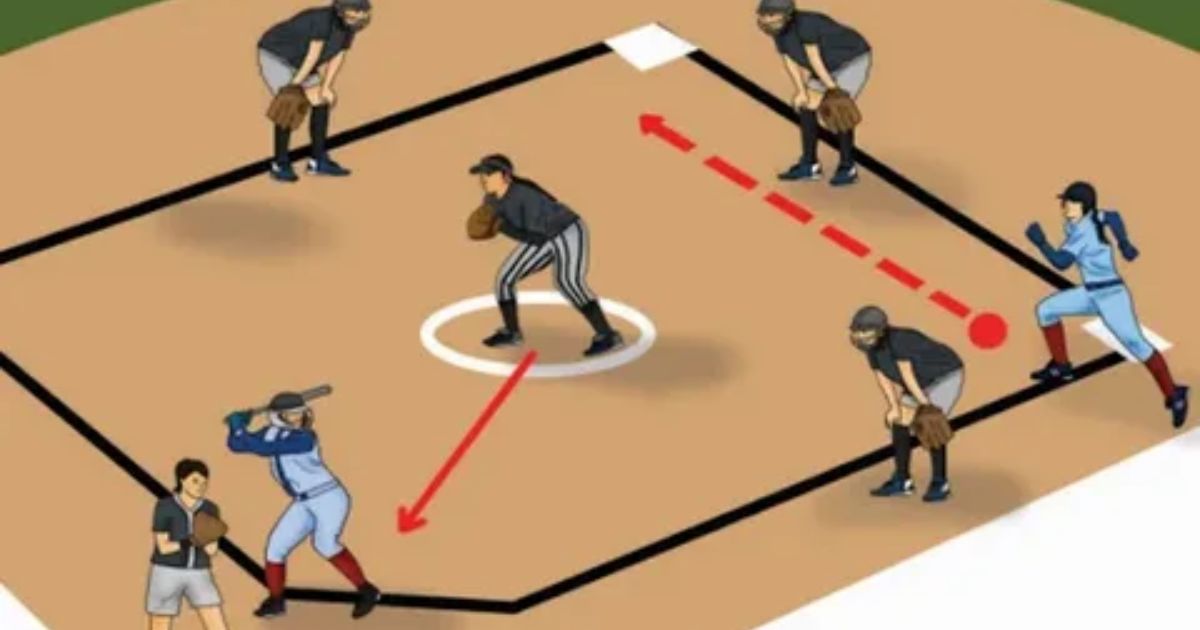In softball, the term “DP” stands for “designated player.” This position is a key role within a team’s lineup, typically used in fastpitch softball. The designated player is an important strategic position that allows a player to bat for another player in the lineup without taking a defensive position in the field.
What position is DP in softball? The designated player is like the pinch hitter in baseball, but with a twist. They’re designated before the game and are listed on the lineup card as both a hitter and a fielder. This flexibility in the lineup can make a significant difference in a team’s offensive performance.
In this comprehensive article, we will explore the ins and outs of the DP position in softball, shedding light on its definition, the role it plays within a team, and the strategies involved in utilizing this position effectively. From its origins to its impact on modern softball games, this article delves into everything you need to know about the DP position.
The Definition of DP in Softball
The DP, or Designated Player, is a specialized position in the sport of softball. This role is mainly found in fastpitch softball, where it allows teams to enhance their offensive capabilities without sacrificing defensive prowess.
In essence, the DP in softball is a player who is designated to bat for another player in the lineup, without taking a specific defensive position on the field. This unique position is listed on the team’s lineup card as both a hitter and a fielder, offering flexibility and strategic advantages to the team’s overall performance.
The Evolution of the Designated Player
The evolution of the designated player position in softball reflects the sport’s commitment to adapting and refining its rules to enhance gameplay. Initially introduced in response to the challenge of maintaining offensive power when making pitching substitutions, the designated player rule made its debut in collegiate women’s fast-pitch softball in 1969.
Originally, the designated player was limited to batting for the pitcher, but the rules evolved to allow them to hit for any defensive player. This expansion of the DP’s role has added strategic complexity to the game, giving teams greater flexibility in managing their lineups and making key decisions in critical game situations. As a result, the evolution of the designated player position has become an integral part of softball’s ongoing development and strategic depth.
The Rules Governing the Designated Player Position
The rules governing the designated player position in softball are crucial for understanding its role and impact on the game. A team can include a designated player in its starting lineup, and this player must be listed on the lineup card before the game begins. The designated player is not assigned to any defensive position but is primarily responsible for hitting.
They can be used to bat for any defensive player in the lineup, providing teams with the flexibility to maximize their offensive potential. However, when the DP is used as a pinch-hitter, the player they substitute for is removed from the game and cannot re-enter.
The Role and Responsibilities of the Designated Player
The designated player (DP) in softball plays a unique and vital role within the team, primarily focusing on their offensive capabilities. Their primary responsibility is to be a proficient and consistent hitter. As they do not have a defensive position, their value is concentrated in their ability to contribute offensively.
The DP is often utilized as a pinch-hitter, stepping in to bat for another player in the lineup, particularly in critical game situations or when the team needs an offensive boost. In leagues that allow for the double designated player (DDP) rule, this role becomes even more significant, as both designated players can be employed as pinch-hitters, providing the team with increased offensive options.
Strategies Involving the Designated Player
Strategies involving the designated player (DP) in softball are integral to a team’s success. Coaches employ various tactics to maximize their team’s offensive potential and adapt to the game’s dynamic situations.
The table below highlights some key strategies involving the DP:
| Strategy | Description |
| Offensive Powerhouse | Utilize the DP as a potent hitter, strengthening the batting lineup without a defensive position. |
| Pinch-Hitting | Send in the DP to bat for a specific player, aiming to enhance the team’s chances of scoring runs. |
| Double Designated Player (DDP) | In leagues with DDP rules, utilize two designated players as pinch-hitters, offering flexibility in selecting the best hitter for a given situation. |
| Defensive Replacement | Call upon the DP to enter the game defensively, making them a versatile asset to contribute in the field. |
Each of these strategies plays a crucial role in managing the DP’s dual role as a hitter and, when necessary, a fielder. Coaches carefully consider the game situation, player strengths, and opposition to make strategic decisions that can greatly impact the outcome of a softball game.
The Designated Player in Different Levels of Play

The role and significance of the designated player (DP) can vary considerably depending on the level of play in softball. Different leagues and age groups have their own rules and strategic considerations when it comes to the DP position. Let’s explore the role of the DP in various levels of play.
Youth Softball
In youth softball, the designated player often serves as a tool for player development. Young players may not have fully developed their defensive skills, so the DP allows them to focus on their hitting abilities.
High School Softball
High school softball typically follows the rules of the governing body for interscholastic sports in a given region or country. The use of the DP can vary depending on these rules, but it often mirrors the approach taken in youth softball. The focus in high school softball is on player development, and the DP is a way to provide opportunities for players to excel offensively.
College Softball
College softball, especially at the NCAA and collegiate levels, has more refined and structured rules for the use of the DP. The DP’s role in college softball is influenced by a blend of player development and strategic considerations. Coaches have more experienced athletes at their disposal, and the game becomes more competitive.
Professional Softball
Professional softball leagues, like the National Pro Fastpitch (NPF) in the United States, have their own set of rules and strategies. The role of the DP in professional softball is particularly interesting because it showcases the highest level of play in the sport.
Professional teams seek a balance between offense and defense, and the DP is a critical part of this equation. Coaches make strategic decisions based on the strengths of their players and the specific rules of the league they compete in. The DP in professional softball is often a versatile player who can contribute both as a hitter and in the field.
International Softball
At the international level, the rules for the DP position may vary based on the governing body and the specific tournament. Organizations such as the International Softball Federation (ISF) have their own regulations, which can influence how the DP is used in international competitions like the Olympic Games and the Softball World Cup.
In international play, teams aim to field the best combination of hitters and fielders. The DP position becomes a key element in achieving this balance. The ability to pinch-hit for defensive players and make strategic substitutions is essential for success on the world stage.
FAQs
What is the role of the designated player in softball?
The designated player, or DP, is primarily an offensive player who can hit for any defensive player in the lineup without taking a defensive position.
Can a designated player be re-entered into the game as a defensive player?
Yes, a DP can be re-entered as a defensive player, but when they do so, the player they were batting for must also re-enter in a different batting position.
Are there different rules for the designated player in youth and college softball?
The rules for the designated player can vary by level of play, with differences in how the DP can be used and the strategic implications.
What is the double designated player (DDP) rule in softball?
The DDP rule allows two players to be designated as hitters, providing teams with more flexibility in selecting pinch-hitters without affecting the defensive lineup.
Is the designated player position used in professional and international softball competitions?
Yes, the designated player position is employed in professional and international softball, where teams strategically use the DP to maximize their offensive potential while maintaining defensive strength.
Conclusion
In conclusion, the designated player position in softball serves as a versatile and strategic asset across various levels of play, from youth to professional leagues. Its role, governed by specific rules, enhances the balance between offense and defense, making it a vital component in the evolving landscape of softball.








